 Simulation of PowerElectronics Circuitswith MATLAB/SimulinkDesign, Analyze, and PrototypePower ElectronicsFarzin AsadiMaltepe UniversityIstanbul, TurkeySimulation of Power Electronics Circuits with MATLAB/Simulink: Design,Analyze, and Prototype Power Electronics Farzin Asadi Maltepe University Istanbul, Turkey ISBN-13 (pbk): 978-1-4842-8219-9 ISBN-13 (electronic): 978-1-4842-8220-5 https://doi.org/10.1007/978-1-4842-8220-5 Copyright 2022 by Farzin Asadi This work is subject to copyright. All rights are reserved by the Publisher, whether the whole or part of the material is concerned, specifically the rights of translation, reprinting, reuse of illustrations, recitation, broadcasting, reproduction on microfilms or in any other physical way, and transmission or information storage and retrieval, electronic adaptation, computer software, or by similar or dissimilar methodology now known or hereafter developed. Trademarked names, logos, and images may appear in this book. Rather than use a trademark symbol with every occurrence of a trademarked name, logo, or image we use the names, logos, and images only in an editorial fashion and to the benefit of the trademark owner, with no intention of infringement of the trademark. The use in this publication of trade names, trademarks, service marks, and similar terms, even if they are not identified as such, is not to be taken as an expression of opinion as to whether or not they are subject to proprietary rights. While the advice and information in this book are believed to be true and accurate at the date of publication, neither the authors nor the editors nor the publisher can accept any legal responsibility for any errors or omissions that may be made.
Simulation of PowerElectronics Circuitswith MATLAB/SimulinkDesign, Analyze, and PrototypePower ElectronicsFarzin AsadiMaltepe UniversityIstanbul, TurkeySimulation of Power Electronics Circuits with MATLAB/Simulink: Design,Analyze, and Prototype Power Electronics Farzin Asadi Maltepe University Istanbul, Turkey ISBN-13 (pbk): 978-1-4842-8219-9 ISBN-13 (electronic): 978-1-4842-8220-5 https://doi.org/10.1007/978-1-4842-8220-5 Copyright 2022 by Farzin Asadi This work is subject to copyright. All rights are reserved by the Publisher, whether the whole or part of the material is concerned, specifically the rights of translation, reprinting, reuse of illustrations, recitation, broadcasting, reproduction on microfilms or in any other physical way, and transmission or information storage and retrieval, electronic adaptation, computer software, or by similar or dissimilar methodology now known or hereafter developed. Trademarked names, logos, and images may appear in this book. Rather than use a trademark symbol with every occurrence of a trademarked name, logo, or image we use the names, logos, and images only in an editorial fashion and to the benefit of the trademark owner, with no intention of infringement of the trademark. The use in this publication of trade names, trademarks, service marks, and similar terms, even if they are not identified as such, is not to be taken as an expression of opinion as to whether or not they are subject to proprietary rights. While the advice and information in this book are believed to be true and accurate at the date of publication, neither the authors nor the editors nor the publisher can accept any legal responsibility for any errors or omissions that may be made.
The publisher makes no warranty, express or implied, with respect to the material contained herein. Managing Director, Apress Media LLC: Welmoed Spahr Acquisitions Editor: Aaron Black Development Editor: James Markham Coordinating Editor: Jessica Vakili Distributed to the book trade worldwide by Springer Science+Business Media New York, 233 Spring Street, 6th Floor, New York, NY 10013. Phone 1-800-SPRINGER, fax (201) 348-4505, e-mail orders-ny@springer-sbm.com, or visit www.springeronline.com. Apress Media, LLC is a California LLC and the sole member (owner) is Springer Science + Business Media Finance Inc (SSBM Finance Inc). SSBM Finance Inc is a Delaware corporation. For information on translations, please e-mail booktranslations@springernature.com; for reprint, paperback, or audio rights, please e-mail bookpermissions@springernature.com.
Apress titles may be purchased in bulk for academic, corporate, or promotional use. eBook versions and licenses are also available for most titles. For more information, reference our Print and eBook Bulk Sales web page at http://www.apress.com/bulk-sales. Any source code or other supplementary material referenced by the author in this book is available to readers on the Github repository: https://github.com/Apress/Simulation- of-Power Electronics-Circuits-with-MATLAB/Simulink. For more detailed information, please visit http://www.apress.com/source- code. Printed on acid-free paper Dedicated to my lovely brother, Farzad, and my lovelysisters, Farnaz and Farzaneh.Table of Contents About the Author xi About the Technical Reviewers xiii Preface xv Chapter 1: Introduction to Simulink 1 Power Electronic Circuits and Simulation 1 Example 1: Step Response of a Transfer Function Model 2 Locating Blocks 6 Example 2: PID Controller Design in the MATLAB Environment 18 Example 3: Feedback Control System 22 Example 4: PID Controller Design in the Simulink Environment 28 Example 5: Plot Two or More Waveforms on One Scope Block 32 Option 1: Increasing the Number of Inputs on the Scope Block 33 Option 2: Using the Multiplexer (Mux) Block 39 Summary42 Chapter 2: Simulation of Dynamic Systems in Simulink 43 Example 1: Simulation of Differential Equations 44 Example 2: Simulation of Differential Equations with Only One Integrator Block 59 Example 3: Simulation of Differential Equations with the MATLAB Function Block 65 Example 4: Copying and Taking Out a Block from the Model 78 Example 5: State-Space Block 81 v Table of ConTenTs Example 6: To Workspace Block 85 Example 7: Simulation of the Dynamic Equation of a Boost Converter 90 Example 8: Simulation of Discrete Time Equations (I) 99 Example 9: Simulation of Discrete Time Equations (II) 104 Summary107 Chapter 3: Important Measurements on Signals 109 Example 1: Single-Phase Half-Wave Diode Rectifier 109 Example 2: Measurement with the Oscilloscope Block 141 Example 3: Measurement with the Multimeter Block 145 Example 4: Measurement Port 160 Example 5: Mean and RMS Blocks 165 Example 6: Instantaneous Power and Average Power 178 Example 7: Apparent Power and Power Factor 186 Summary187 Chapter 4: Simulation of Uncontrolled Rectifier Circuits 189 Example 1: Goto and From Blocks 190 Example 2: Making a Subsystem 192 Example 3: Power Block202 Example 4: Freewheeling Diode 216 Example 5: Disabling a Block 218 Example 6: Fourier Block 222 Example 7: Three-Phase Diode Rectifier 229 Example 8: Measurement of the Power Factor of a Three-Phase Uncontrolled Rectifier241 Example 9: Measurement of Conduction Loss 245 Summary248 vi Table of ConTenTs Chapter 5: Simulation of Controlled Rectifier Circuits 249 Example 1: Single-Phase Half-Wave Thyristor Rectifier249 Example 2: Single-Phase Full-Wave Thyristor Rectifier (I) 254 Example 3: Single-Phase Full-Wave Thyristor Rectifier (II) 262 Example 4: Three-Phase Thyristor Rectifier 263 Example 5: Effect of a Filter Capacitor on the Rectifier Circuit 281 Example 6: Coupled Inductors291 Summary300 Chapter 6: Simulation of DC-DC Converters301 Example 1: Buck Converter 302 Example 2: Operating Mode of the DC-DC Converter 309 Example 3: Effect of Input Voltage Changes on the Output Voltage 313 Example 4: Effect of Output Load Changes on the Output Voltage 318 Example 5: Generation of PWM Signals 324 Example 6: PWM Generator (DC-DC) Block 335 Example 7: Closed-Loop Control of a Buck Converter 343 Example 8: Flyback Converter 351 Example 9: Efficiency of a Flyback Converter 356 Summary360 Chapter 7: Simulation of Inverters 361 Example 1: Single-Phase PWM Inverter 361 Example 2: THD Block 371 Example 3: Harmonic Analysis with the FFT Analyzer Program 373 Example 4: Three-Phase PWM Inverter 386 Example 5: Connection Port Block 396 Summary403 vii Table of ConTenTs Chapter 8: Simulation of Motors and Generators 405 Example 1: Simulation of a DC Motor 405 Example 2: Simulation of a DC Generator 415 Example 3: Induction Motor 420 Example 4: Effect of Harmonics on AC Motor Speed 428 Summary436 Chapter 9: State Space Averaging 437 State Space Averaging (SSA) 437 Dynamic Equations of a Buck Converter 440 Averaging the Dynamic Equations of a Buck Converter 444 Linearization of Averaged Equations 449 Obtaining the Small-Signal Transfer Functions of the Buck Converter Using MATLAB 457 Summary462 Chapter 10: Input/Output Impedance of DC-DC Converters 463 Input and Output Impedances of a Buck-Boost converter 463 Input and Output Impedances of the Boost Converter 474 Summary483 Chapter 11: Review of Some of the Important Theoretical Concepts 485 Instantaneous Power 485 Average Power 488 Effective Value of a Signal489 Effective Value of a Sum of Two Periodic Signals 494 Measurement of RMS Values of Signals 498 Apparent Power and Power Factor 500 viii Table of ConTenTs Power Computations for Linear Circuits 500 Fourier Series 503 Fourier Series of Important Wave Shapes 505 Calculation of Average Power Using the Fourier Series 507 Total Harmonic Distortion (THD) 508 Summary511 Exercises 513 Exercises for Chapters 1 and 2 513 Exercises for Chapters 3, 4, 5, 6, 7, and 8 514 Exercises for Chapters 9 and 10 517 Index 525 ix 
Next page

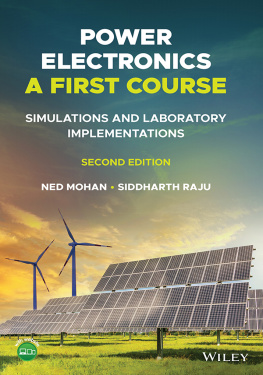
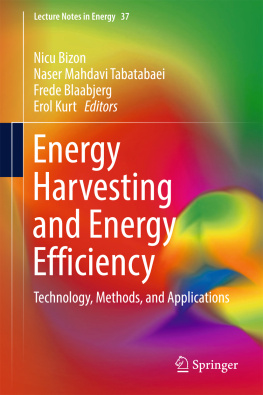
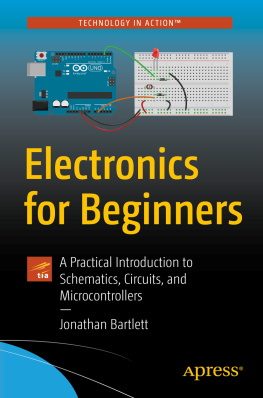

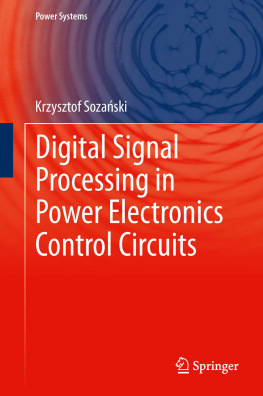


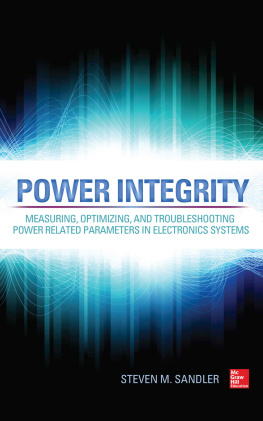

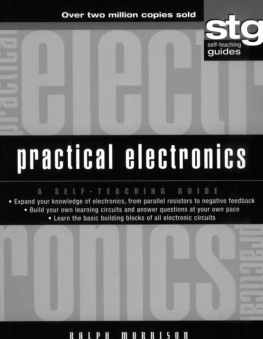

 Simulation of PowerElectronics Circuitswith MATLAB/SimulinkDesign, Analyze, and PrototypePower ElectronicsFarzin AsadiMaltepe UniversityIstanbul, TurkeySimulation of Power Electronics Circuits with MATLAB/Simulink: Design,Analyze, and Prototype Power Electronics Farzin Asadi Maltepe University Istanbul, Turkey ISBN-13 (pbk): 978-1-4842-8219-9 ISBN-13 (electronic): 978-1-4842-8220-5 https://doi.org/10.1007/978-1-4842-8220-5 Copyright 2022 by Farzin Asadi This work is subject to copyright. All rights are reserved by the Publisher, whether the whole or part of the material is concerned, specifically the rights of translation, reprinting, reuse of illustrations, recitation, broadcasting, reproduction on microfilms or in any other physical way, and transmission or information storage and retrieval, electronic adaptation, computer software, or by similar or dissimilar methodology now known or hereafter developed. Trademarked names, logos, and images may appear in this book. Rather than use a trademark symbol with every occurrence of a trademarked name, logo, or image we use the names, logos, and images only in an editorial fashion and to the benefit of the trademark owner, with no intention of infringement of the trademark. The use in this publication of trade names, trademarks, service marks, and similar terms, even if they are not identified as such, is not to be taken as an expression of opinion as to whether or not they are subject to proprietary rights. While the advice and information in this book are believed to be true and accurate at the date of publication, neither the authors nor the editors nor the publisher can accept any legal responsibility for any errors or omissions that may be made.
Simulation of PowerElectronics Circuitswith MATLAB/SimulinkDesign, Analyze, and PrototypePower ElectronicsFarzin AsadiMaltepe UniversityIstanbul, TurkeySimulation of Power Electronics Circuits with MATLAB/Simulink: Design,Analyze, and Prototype Power Electronics Farzin Asadi Maltepe University Istanbul, Turkey ISBN-13 (pbk): 978-1-4842-8219-9 ISBN-13 (electronic): 978-1-4842-8220-5 https://doi.org/10.1007/978-1-4842-8220-5 Copyright 2022 by Farzin Asadi This work is subject to copyright. All rights are reserved by the Publisher, whether the whole or part of the material is concerned, specifically the rights of translation, reprinting, reuse of illustrations, recitation, broadcasting, reproduction on microfilms or in any other physical way, and transmission or information storage and retrieval, electronic adaptation, computer software, or by similar or dissimilar methodology now known or hereafter developed. Trademarked names, logos, and images may appear in this book. Rather than use a trademark symbol with every occurrence of a trademarked name, logo, or image we use the names, logos, and images only in an editorial fashion and to the benefit of the trademark owner, with no intention of infringement of the trademark. The use in this publication of trade names, trademarks, service marks, and similar terms, even if they are not identified as such, is not to be taken as an expression of opinion as to whether or not they are subject to proprietary rights. While the advice and information in this book are believed to be true and accurate at the date of publication, neither the authors nor the editors nor the publisher can accept any legal responsibility for any errors or omissions that may be made.